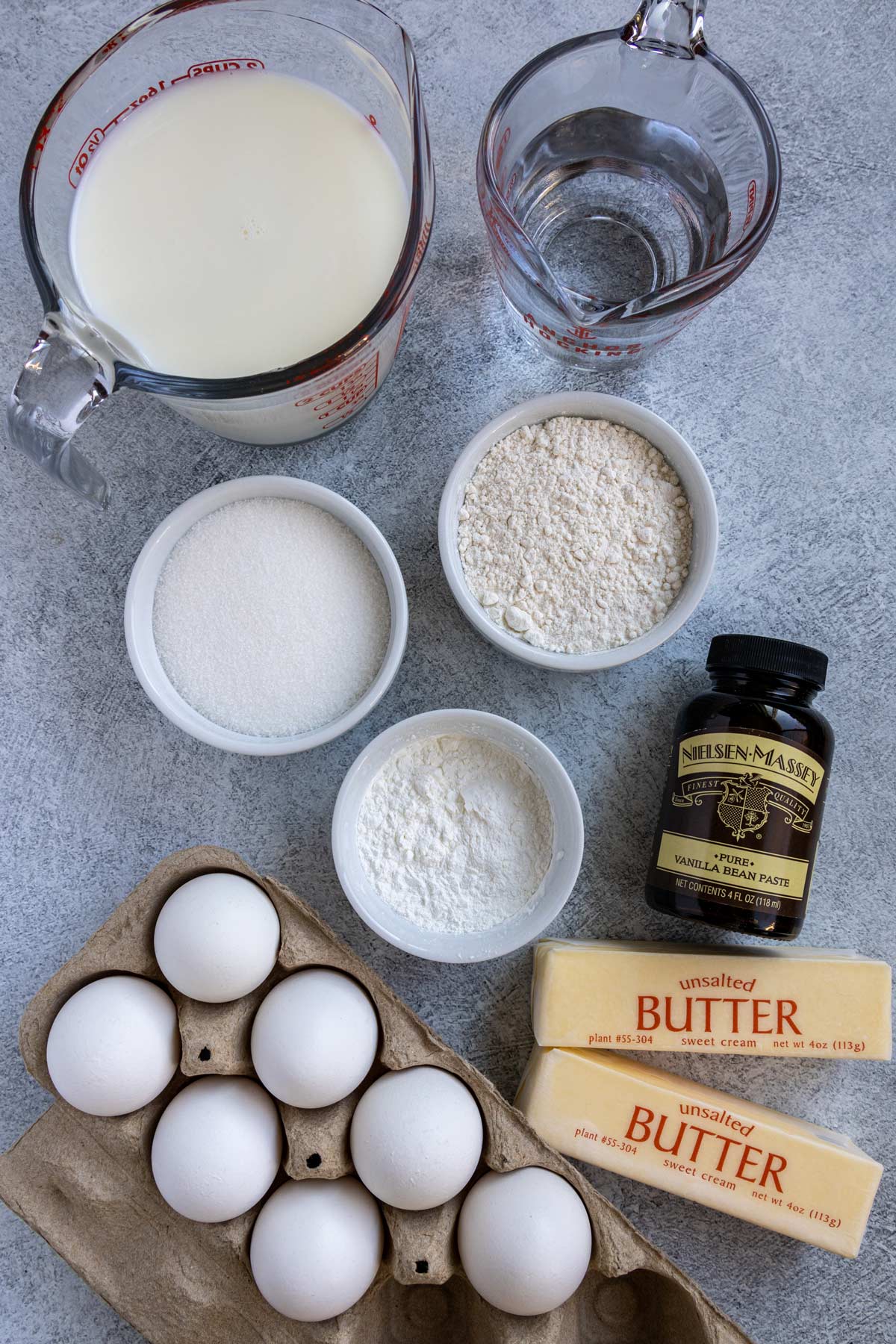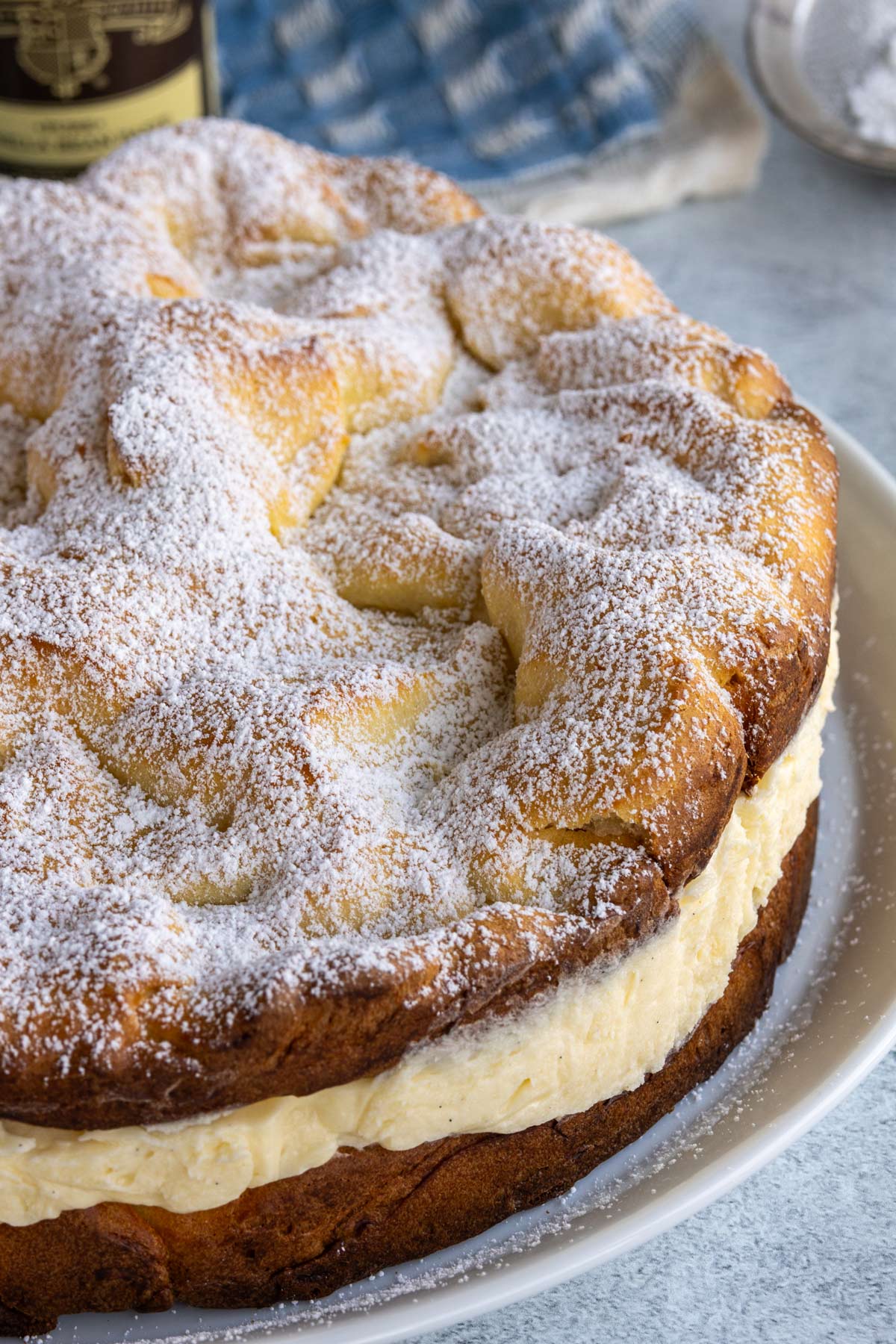introduction
Karpatka is a Polish Carpathian Mountain Cake consisting of layers of fluffy choux pastry and a thick and decadent filling of crème mousseline (German buttercream). Its rustic appearance mimics the Carpathian mountaintops, yet its flavor and texture are reminiscent of the most elegant French choux pastries.

Karpatka (pronounced car-pat-kah) is a popular Polish cream cake featuring two layers of pâte à choux (the same dough you’ll find in eclairs or cream puffs) sandwiched around a thick layer of crème mousseline. It gets its name from the uneven, rugged top which is finished with powdered sugar, giving it the appearance of the snow-topped Carpathian mountains in Poland.
It’s essentially a more rustic version of kremówka, which is more of a cream slice featuring puff pastry instead of the easier and more approachable choux pastry. That being said, Karpatka is basically a giant cream puff cake!
The filling isn’t simply pastry cream, which although delicious in its own right, doesn’t have the structure to hold its own here. It’s actually crème mousseline aka German buttercream. I’ve waxed poetic about German buttercream in the past. It’s an essential component in one of my all-time favorite cakes, Donauwellen.
Crème mousseline or German buttercream is basically pastry cream beaten together with a ton of soft butter. It’s light, fluffy, creamy, and oh so decadent! The addition of butter also gives it more structure when it’s chilled, making it a perfect filling for this Karpatka cake.
Karpatka is either baked as a rectangular cake and cut into square pieces or baked as a round cake and cut into wedges. Here I’ve baked it as a round cake which feels more like a celebration-worthy showstopper. Serve it with coffee or tea at occasions ranging from birthdays to Christmas and Easter.
INGREDIENT NOTES

- Milk: Although some people insist on whole milk for making pastry cream, I’ve been making pastry cream for over 20 years using whatever milk I have on hand (which is often low-fat). Yes the flavor might not be as rich, but in this case especially you’re beating a ton of butter into it to make German buttercream. Use whatever milk you normally have in your fridge to make your Karpatka.
-
- Cornstarch: I use cornstarch to thicken my pastry cream. It’s typically very easy to find, and many people already have it in their pantries. You could use another type of starch, such as potato starch, but the thickening properties may vary slightly, and you may need to adjust the amounts accordingly.
- Eggs: You’ll need whole eggs for making the pâte à choux and egg yolks for making the crème pâtissière. See the FAQs below for what to do with the leftover egg whites. Hint: do NOT throw them away.
- Unsalted Butter: Always use unsalted butter for baking so you can control the amount of salt. I like to leave my butter out at room temperature overnight to allow it to soften enough for baking.

HOW TO MAKE CRÈME PÂTISSIÈRE (FIRST STEP OF THE CUSTARD FILLING)
-
To continue reading, scroll down and click Next👇👇
ADVERTISEMENT

